Determination of Foreign Exchange Rate:
- Exchange rate in a free exchange market is determined at a point, where demand for foreign exchange is equal to the supply of foreign exchange.
- Let us assume that there are two countries – India and U.S.A – and the exchange rate of their currencies i.e., rupee and dollar is to be determined. Presently, there is floating or flexible exchange regime in both India and U.S.A. Therefore, the value of currency of each country in terms of the other currency depends upon the demand for and supply of their currencies.
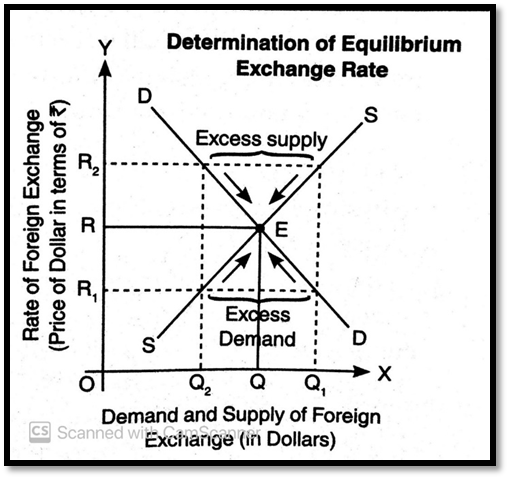
- In the above diagram, the price on the vertical axis is stated in terms of domestic currency (that is, how many rupees for one US dollar). The horizontal axis measures the quantity demanded or supplied.
- In the above diagram, the demand curve [DD] is downward sloping. This means that less foreign exchange is demanded as the exchange rate increases. This is due to the fact that the rise in price of foreign exchange increases the rupee cost of foreign goods, which make them more expensive. As a result, imports decline. Therefore, the demand for foreign exchange also decreases.
- The supply curve [SS] is upward sloping which means that supply of foreign exchange increases as the exchange rate increases.
- This makes home country’s goods become cheaper to foreigners since rupee is depreciating in value. The demand for our exports should therefore increase as the exchange rate increases.
- The increased demand for our exports translates into greater supply of foreign exchange. Therefore, the supply of foreign exchange increases as the exchange rate increases.
Disequilibrium conditions under Equilibrium exchange rate:
Change in demand:
- Increase in demand for dollar: An increase in the demand for US dollar in India will cause the demand curve to shift to D1$ and the exchange rate rises to P1$. Note that increase in the exchange rate means that more rupees are required to buy one US dollar. When this occurs, Indian rupee is said to be depreciating.
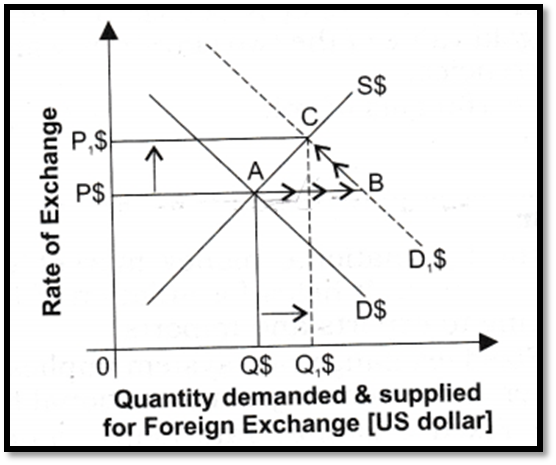
- Decrease in demand for dollar: A decrease in the demand for US dollar in India will cause the demand curve to shift to D1$ and the exchange rate falls to P1$. Note that decrease in the exchange rate means that less rupees are required to buy one US dollar. When this occurs, Indian rupee is said to be appreciating.
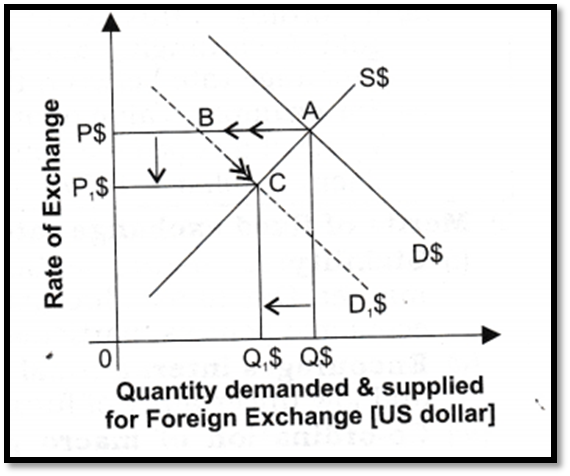
Change in Supply
- Increase in supply for dollar: An increase in the supply of US dollar causes the supply curve to shift to S1$ and exchange rate falls to P1$. In this case, rupee cost of US dollar is decreasing and the Indian rupee is said to be appreciating.
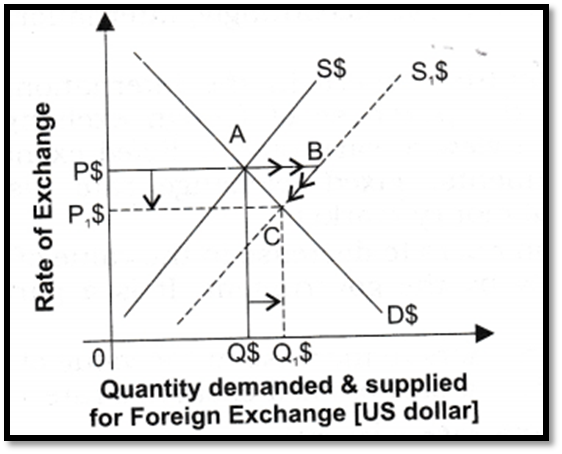
- Decrease in supply of dollar: A decrease in the supply of US dollar causes the supply curve to shift to S1$ and exchange rate rises to P1$. In this case, rupee cost of US dollar is increasing and the Indian rupee is said to be depreciating.
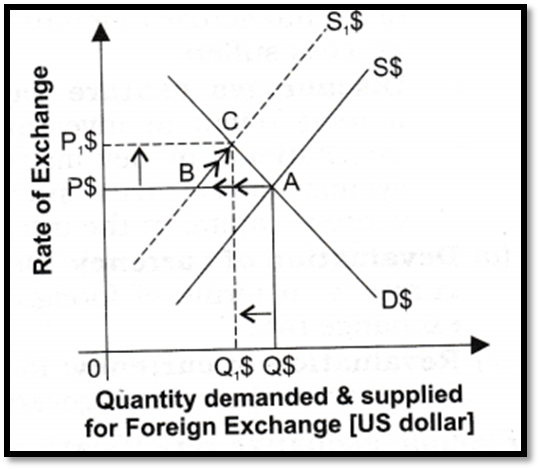

 PathSet Publications
PathSet Publications
